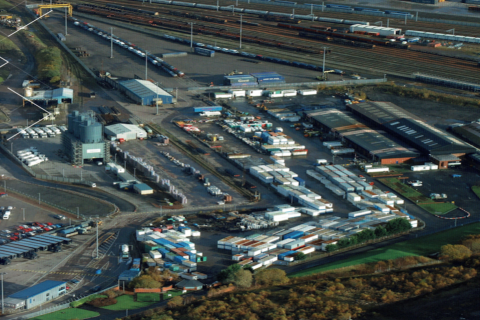Intermodal Hungary grows but rail volumes drop

Domestic intermodal traffic in Hungary grew by more than 13 per cent in 2021 compared to 2020. Trends show that it will expand more in the coming years, says the Association of Hungarian Logistics Service Centers (MLSZKSZ). However, rail does not seem to benefit from the momentum since it saw its volumes decreasing during 2021, compared to road transport that exceeded pre-pandemic levels.
“The total volume of domestic freight transport – road, rail, water – (277 million tonnes) increased by 11,8 per cent and its performance (54,4 billion tonne-kilometres) by 3 per cent compared to 2020”, says the association MLSZKSZ. However, the main growth driver is the increased volumes transported by road. As the association explains, road haulage in Hungary reached its highest volume in recent years, while rail transport was affected by problems that led to its decline.
Domestic intermodal traffic has been growing steadily in recent years, expanding 13,3 per cent last year compared to 2020, with almost 751,000 TEUs delivered intermodally.” According to our experience, the panic caused by the coronavirus epidemic in 2020, closures, border crossing problems, the risk of infection and the accumulation of Brexit increased the demand for intermodal transport, and its impact appeared on the markets in 2021”, says MLSZKSZ.
Not the desired modal shift
However, the fact that intermodal grew in Hungary did not come hand in hand with a modal shift on rail. Specifically, the volume of Hungarian rail freight traffic in 2021 (49.6 million tonnes) decreased by 4,2 per cent compared to 2020 and the performance (10.9 billion tonne-kilometres) by 6 per cent. Simultaneously, road traffic increased by 16,4 per cent in volume, overthrowing rail and reaching an all-time high percentage for the last few years.
“The reason for the strengthening of domestic road freight traffic was the growth of the construction industry and the performance of courier services related to e-commerce, and the economic growth in international traffic, including the significant import-export demand of the manufacturing industry. Seventy-nine per cent of the goods transported by transport companies registered in Hungary were transported by road”, explains MLSZKSZ.
The recovery of road traffic combined with frequent track closures, cross-border congestion, problematic traffic signalling and the weak single wagon traffic in the country affected rail freight sharply. Things could be pretty worrying. However, 2021 was a transitional year that would be accompanied by a recovery from the pandemic’s impact. As a result, 2022 could be more descriptive regarding the share of volumes between rail and road transport in Hungary.
After all, as MLSZKSZ described, “despite the decline in the performance of rail freight transport, intermodal transport was able to increase its share within the railways last year, keeping its share above 20 per cent stable, in a slow-growth trend”.
Also read:
-
Eurovignette Directive approved, but how does it help intermodal?
-
Rail freight could lose competitiveness and shrink due to rising costs
You just read one of our premium articles free of charge
Want full access? Take advantage of our exclusive offer




